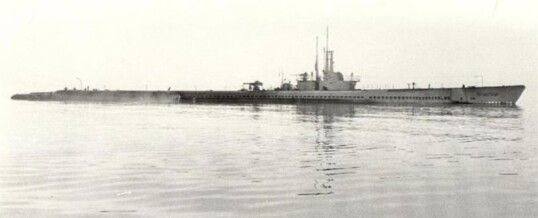
When it comes to shipwrecks, today is an important date on the calendar. On April 8 1940, the Polish submarine Orzel torpedoed and sank the German ship Rio De Janeiro – thereby revealing the plans of the German invasion of Norway. The wreck of the Rio De Janeiro has been found. If you are seeing this in a post, other than on Shipwrecks.com, read more about these wrecks and other ships lost on an April 8 at http://shipwrecks.com/shipwrecks-of-april-8/. Lots more shipwrecks for April 8 during both WWI and WWII. I will enter wrecks for other years as soon as I get the time. There were simply too many wrecks to get to. I also have a lot more information on almost all of these wrecks. Just not enough hours to enter it all. — ELS
Today’s Shipwrecks™
for April 8
compiled and edited by Dr. E. Lee Spence
1814: Seamen and marines from the following British warships: HMS Hogue, 74 guns, Commanded by the Hon. Thomas Blayden Capel; HMS Maidstone, 32 guns, Captain George Burdett; HMS Endymion, 50 guns, Captain Henry Hope, and HMS Borer — destroyed 27 American vessels in the Connecticut River.
1909: On Good Friday, April 9, 1909, the Brocklebank Line steamship Mahratta, 5,639 ton, ran aground in the Goodwin Sands, with a heavy cargo, a crew of 90 and 17 passengers. The Mahratta was bound from from Calcutta, India to London with a mixed cargo that included jute, rice, rubber and tea. She ran aground on the Fawk Spit of the Goodwin Sands in calm weather and stuck fast.
The next day, lifeboats were launched and the majority of the passengers were rescued by the Deal lifeboat. Although two tugs were sent from Dover, it was impossible to pull Mahratta free. Mahratta broke in two the day after this. The three passengers aboard at the time included one female passenger who had refused to leave as she had a dog with her which would have to go into quarantine if rescued.
The Goodwin Sands did not break the Mahratta‘s back for over 24 hours, which allowed locals to help unload her cargo. Afterwards, many of them demanded their right of salvage to what they had saved, and when customs officers searched their houses they were physically roughed up.
The westerly wind increased in strength, and as cargo was salvaged from No.4 and 5 holds the ship listed making further salvage more difficult.
A Board of Trade inquiry found that the ship had run aground because the pilot had failed to recognise the Gull Light and then took an incorrect course.
A second Brocklebank Line steamship named Mahratta ran aground on the Goodwin Sands on October 9, 1939, less than a mile away from the site of the wreck of the first Mahratta.
1915: The French four-masted, full-rigged ship Châteaubriand was torpedoed and sunk in the English Channel, when off the Isle of Wight and twenty-five nautical miles southeast of Beachy Head, East Sussex, United Kingdom, by the German submarine U-32. The Germans gave the crew ten minutes within which to leave the vessel. She then torpedoed the ship, which sank in three minutes. The crew, numbering 34, were in two boats. There was a rough sea, and they endured intense sufferings, being without food and suffering from cold for 48 hours. They reached port with the help of a rescue boat. All twenty-five of her crew survived.
1916: The British cargo ship Adamton was captured, shelled and sunk by the German submarine U-22 on April 8, 1916. The location was described as in the Atlantic Ocean in latitude 56°32′, longitude 7°26′ west, fifteen nautical miles north of Skerryvore, Scotland. One of the crew was lost. She was bound for Barry Roads in ballast as an Admiralty chartered collier (coal carrier). She had a steel hull and was 2,304 gross tons, 1,494 net tons, 295′ in length, 46′ in breadth, and 19.2′ in depth of hull. She had a single screw powered by a 247 nominal horsepower, three cylinder steam engine made by Richardson, Westgarth & Company, Sunderland, England. The cylinders were 22″, 36″, and 60″ in diameter, with a 39″ piston stroke. She was built in 1904 and her official number was 119959.
1916: The British tug Moss Rose foundered at Barry, Glamorgan, Wales, United Kingdom. Her crew were rescued.
1916: The Russian sailing vessel Sal’dagan, 75 tons, was sunk in the Black Sea, in latitude 44.52 north, longitude 32.40 east, by the German submarine UB-7, commanded by Wilhelm Werner. Her crew survived.
1916: The Spanish cargo ship Santanderino, 3,346 gross tons, bound from Liverpool to Havana, was sunk in the Atlantic Ocean in latitude 48.20° North, longitude 05.33° West, eighteen nautical miles off Ouessant (Ushant), Finistère, France by the German submarine U-66, commanded by Thorwald von Bothmer. Sixteen of her crew of twenty were rescued by a Norwegian merchant ship. She was built in 1890 by D. & W. Henderson & Co., Glasgow, Scotland. She was owned by M. M. de Arrotegui, Bilbao, Spain.
1916: The British collier Zafra, 3,578 gross tons, bound from Cardiff, Wales, with a cargo of coal, to Malta, was captured and scuttled in the Mediterranean in latitude 36.26° North, longtitude 01.00° West, forty-four nautical miles north of Oran, Algeria by the German submarine U-34, commanded by Claus Rücker. Her crew was saved. The Zafra was built in 1905 by R. Craggs & Sons, Ltd., Middlesbrough, England. She was owned by English & American Shipping Co., Ltd. (C. T. Bowring & Co., Ltd.), in London.
1917: The Italian cargo ship Alba was sunk in the Mediterranean Sea three nautical miles off Garraf, Catalonia, Spain by the German submarine U-52.
1917: The Imperial German V25-class destroyer G88 was torpedoed and sunk in the North Sea by a British Royal Navy coastal motorboat.
1917: The British sailing vessel Geilan Bahri, 19 gross tons, was captured and scuttled with a bomb, in the Mediterranean, fifty-four nautical miles off Alexandria, Egypt by the Imperial German submarine UC-34, commanded by Robert Sprenger.
1917: The Greek cargo ship Livatho was captured and scuttled in the Mediterranean northwest of Crete by the Imperial German submarine UB-47. Her crew survived. She was built in 1891 and was 2,920 gross tons.
1917: The Italian sailing vessel Lucia was sunk in the Mediterranean Sea off Cape Pula, Sardinia by the Imperial German submarine U-65.
1917: The Greek cargo ship Nestos was sunk in the Mediterranean Sea in in latitude 36°27′ north, longitude 20°59′ east, fifty nautical miles west southwest of Sapientza, Greece, by the Imperial German submarine UB-47, commanded by Hans Hermann Wendlandt. The Nestos was built on the River Clyde in 1914 by Archibald McMillan & Son Ltd. in Dunbarton, Scotland, and was 4,060 gross tons. She had one triple expansion, 3 cylinder, steam engine and was single screw.
1917: The Italian sailing vessel Papa Gian Battista, 138 tons, was sunk in the Mediterranean Sea off Cape Pula, Sardinia by the Imperial German submarine U-65.
1917: The British cargo ship Petridge, 1,712 gross tons, was torpedoed and sunk without warning in the Atlantic Ocean two hundred nautical miles west northwest of Ushant, France by the Imperial German submarine U-55. Her crew survived, but two of them (her captain and one gunner) were taken as prisoners of war. She had been armed for defense.
1917: The armed British freighter Torrington was torpedoed and sunk in the Atlantic Ocean one hundred and fifty nautical miles southwest of the Isles of Scilly by the German submarine U-55 with the loss of thirty-four crew. Her captain was taken as a prisoner of war.
1917: The armed, British cargo ship Umvoti, 2,616 gross tons, was torpedoed and sunk in the Atlantic Ocean two hundred nautical miles west northwest of Ushant by the German submarine U-55 with the loss of four crew. Two survivors were taken as prisoners of war.
1918: The British cargo ship Bengali was torpedoed and sunk in the Mediterranean Sea in latitude 31°21′ north, longitude 29°47′ east, fourteen nautical miles off Alexandria, Egypt, by the Imperial German submarine UC-34. Her crew survived.
1918: The British E-class submarine E19 was scuttled in the Gulf of Finland off the Harmaja Lighthouse.
1918: The Belgian cargo Flanders ship struck a mine and sank in the North Sea off the coast of the Netherlands. Her crew were rescued.
1918: The Norwegian coaster Nyassaland was sunk in the English Channel eighteen nautical miles east of Start Point, Devon, United Kingdom by Imperial German submarine UB-33. Her crew survived.
1918: The Norwegian sailing vessel Superb was sunk in the North Sea forty nautical miles south of Lindesnes, Vest-Agder, Norway, by Imperial German submarine U-90. Her crew survived.
1940: The British G-class destroyer Glowworm was shelled and sunk in the Norwegian Sea northwest of Trondheim, Norway while ramming the German heavy cruiser Admiral Hipper during Operation Weserübung with the loss of 115 of her 149 crew.
1940: The Greek freighter Okeania struck a mine and sank in the North Sea in latitude 51°18′ north, longitude 2°04′ east, with the loss of one crew member. The survivors were rescued by HMS Boadicea and the Dutch steamer Beverland.
1940: The German troopship Rio de Janeiro, 5261 gross tons, was torpedoed by the Polish submarine Orzel and sunk off Lillesand, Norway, in latitude 58°07’8″ north, longitude 8°29’4″ east, with the loss of about 200 of the 380 people on board. The Rio de Janeiro, pretending to be a commercial vessel, was heading to Bergen in order to take part in the initial landings of Operation Weserübung – the invasion of Norway and the opening move of the Norwegian Campaign.
The survivors were rescued by the Royal Norwegian Navy boats Gyller and Odin, and various fishing boats. The Rio de Janeiro has been found. See online article about it.
1941: The British tanker Ahamo struck a mine and sank in the North Sea in latitude 53°22′ north, longitude 0°59′ east) with the loss of fourteen crew.
1941: The British cargo ship Eskdene, Captain William J. Thomas, bound from Hull to Buenos Aires, via Methil and Oban, which separated from convoy OG-57 when it was dispersed, was struck at 7:42 a.m. on April 8, 1941, by two torpedoes fired from the German submarine U-107. The sub then surfaced and, after the crew abandoned her, scuttled her by firing 104 rounds into the damaged, but still floating steamer. She sank in the Atlantic Ocean, southeast of the Azores, in latitude 34°43′ north, longitude 24°21′ west. All thirty-nine of her officers and crew were rescued by the British merchant steamer Penhale. and landed at Pernambco on April 22. The Eskdene was built in 1934 in Sunderland, England, by Bartram & Sons, Ltd. and was owned by the Dene Shipping Co Ltd. in London, which was also her home port. Click here to view an image of the Eskdene.
1941: On April 8, 1941. The armed British cargo ship Helena Margarita, Owen T. Jones master, was torpedoed and sunk in the Atlantic Ocean 330 nautical miles west of Madeira, Portugal, in latitude 33° north, longitude 23°52′ west, by the German submarine U-107, with the loss of twenty-seven of her thirty-six crew. The survivors were rescued by Royal Fleet Auxiliary Cairndale. She was built in Holland in 1915 and was owned by Uxine Shipping Co., Ltd. She was 3,314 gross tons, with a triple expansion compound steam engine capable of making 290 nominal horsepower. She was 323′ in length, 47.5′ in breadth, and 22′ in depth of hull. Captain Jones was afterwards awarded the Lloyd´s War Medal for bravery at sea.
1941: The Royal Italian Navy minelayer Ostia was bombed and sunk at Massawa, Italian Somaliland, by Royal Air Force aircraft on April 8, 1941.
1941: The Royal Italian Navy Giuseppe Sirtori-class destroyer Vincenzo Giordano Orsini; the Royal Italian Navy torpedo boats MAS 204, MAS 206, MAS 210, MAS 213 and MAS 216; the Italian passenger ship Colombo, the Italian coasters San Giorgio, Pirano, and Trieste; and the Italian boats Sole and Ardita were all scuttled at Massawa on April 8, 1941.
1941: The British cargo ship Tweed was torpedoed and sunk in the Atlantic Ocean in latitude 7°43′ north, longitude 15°11′ west by the German submarine U-124 with the loss of three of her 28 crew.
1942: The German cargo ship Kurzesee was sunk by a submarine or a mine at latitude 70°06′ north, longitude 21° east off Skjervøy, Norway.
1942: The net laying ship HMS Moor struck a mine and sank in the Mediterranean Sea off Malta.
1942: The Yugoslavian cargo ship Nemanja was torpedoed and sunk in the Atlantic Ocean in latitude 40°30′ north, longitude 64°50′ west by the German submarine U-84 with the loss of thirteen of her forty-seven crew and officers.
1942: The American tanker Oklahoma, 9,264 gross tons, bound from Port Arthur, Texas, to Providence, Rhode Island, was torpedoed about 12 miles off Brunswick, Georgia, on April 8, 1942, by the German submarine U-123. There were 18 survivors out of her crew of 37. She was sunk in just 40′ of water and was afterwards salvaged, repaired and put back into service.
1942: On April 8, 1942, German submarine U-123 torpedoed the American tanker Esso Baton Rouge about 15 miles east of St. Simons Island, Georgia, by U-123. Three men were lost out of her crew of 39. She was subsequently raised, repaired and returned to service in November 1942.
1943: The Spanish steamer Castillo Montealegre, 3,972 tons, was sunk on April 8, 1943, by the German submarine U-123.
1944: The Japanese cargo ship Aratama Maru was torpedoed and sunk in the Pacific Ocean off the Mariana Islands by the USS Seahorse.
1944: The Japanese freighter Honan Maru was torpedoed and sunk in the East China Sea by USS Whale.
1944: The Japanese cargo ship Kizugawa Maru was torpedoed and sunk in the Pacific Ocean off the Mariana Islands by the American submarine Seahorse.
1944: The British freighter Nebraska was torpedoed and sunk in the South Atlantic in latitude 11°55′ south, longitude 19°52′ west, by the German submarine U-843, with the loss of two of the 68 people on board. Survivors were rescued by Kindat or reached land in their lifeboat.
1944: The Type IIA German submarine U-2 collided with the German trawler Helmi Söhle in the Baltic Sea near Pillau, East Prussia and sank with the loss of seventeen of her 35 crew.
1944: The Type VIIC German submarine U-962 was depth charged by HMS Crane and HMS Cygnet, and sunk, with the loss of all 50 crew, in the Atlantic Ocean in latitude 45°43′ north, longitude 19°57′ west, north west of Cape Finisterre, Spain.
1945: The German cargo ship Albert was bombed and wrecked by aircraft at Hamburg, Germany. The wreck scrapped in January 1950.
1945: The german seaplane tender Boelcke was sunk by Soviet aircraft.
1945: The German auxiliary ship Franken was bombed and sunk by Soviet bombers off Hela, Danzig-West Prussia.
1945: The German seaplane tender Hans Albrecht Wedel was sunk by Soviet aircraft.
1945: The Type VIIC submarine U-774 was depth charged and sunk in the Atlantic Ocean north west of Ireland in latitude 49°58′ north, longitude 11°51′ west by HMS Bentinck and HMS Calder with the loss of all 44 crew.
1945: The Type VIIC/41 German submarine U-1001 was depth charged and sunk in the Atlantic Ocean southwest of Land’s End, Cornwall, United Kingdom (49°19’N 10°23’W) by HMS Byron and HMS Fitzroy with the loss of all 46 crew.
1945: The Type XXI German submarines U-2509 and U-2514 were bombed and sunk at Hamburg in a Royal Air Force air raid.
1945: The Type XXI German submarine U-3512 was bombed and sunk at Kiel in an Allied air raid.
1945: The German submarine tender Wilhelm Bauer was bombed and sunk by aircraft.
NOTE: This is by no means meant to be a complete list of the vessels lost on April 8, as there have been thousands of ships lost for every day of the year. All of the above entries have been edited (shortened) come from various editions of Spence’s List™. The original lists usually give additional data and sources. Those lists are being updated and are or will be made available for a fee elsewhere on this site.
© 2013, 2018 by Dr. E. Lee Spence for composition, content and compilation.
Share
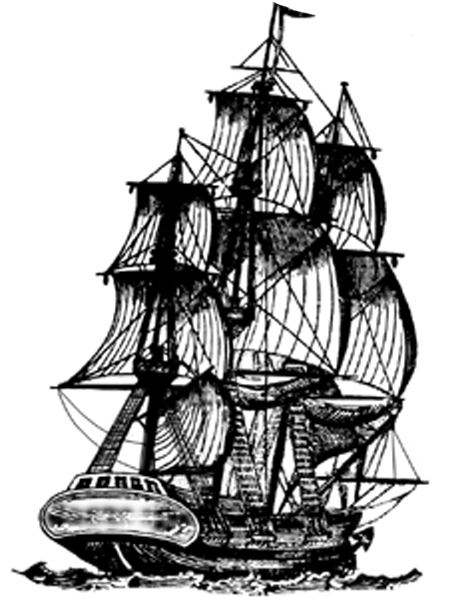

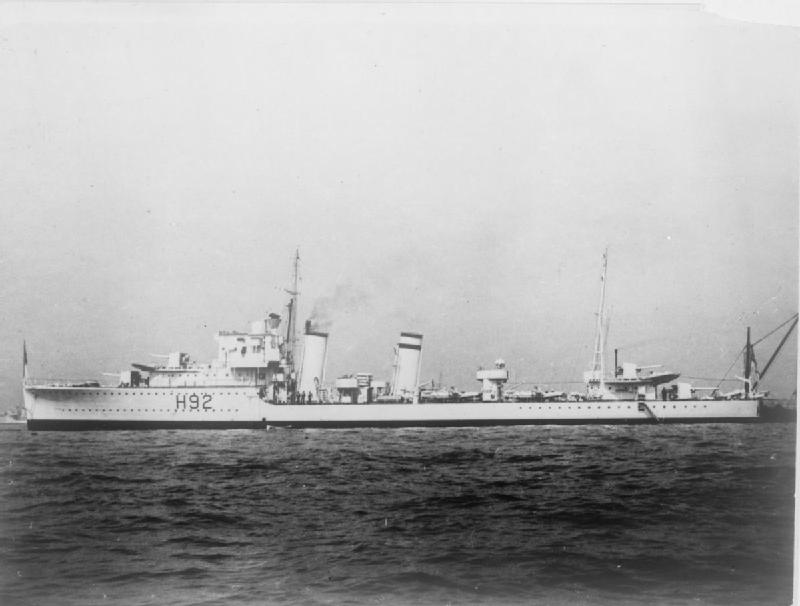
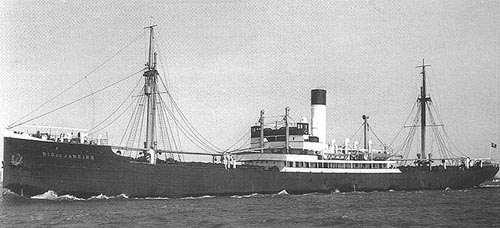
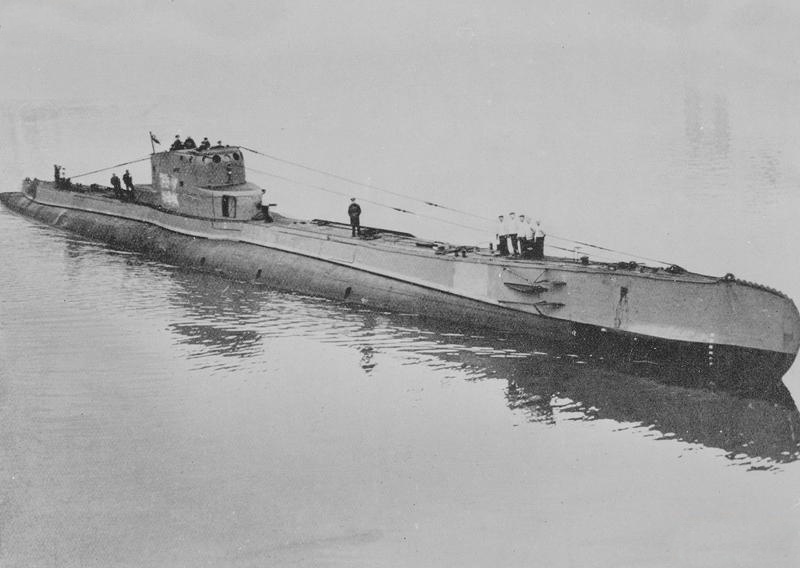
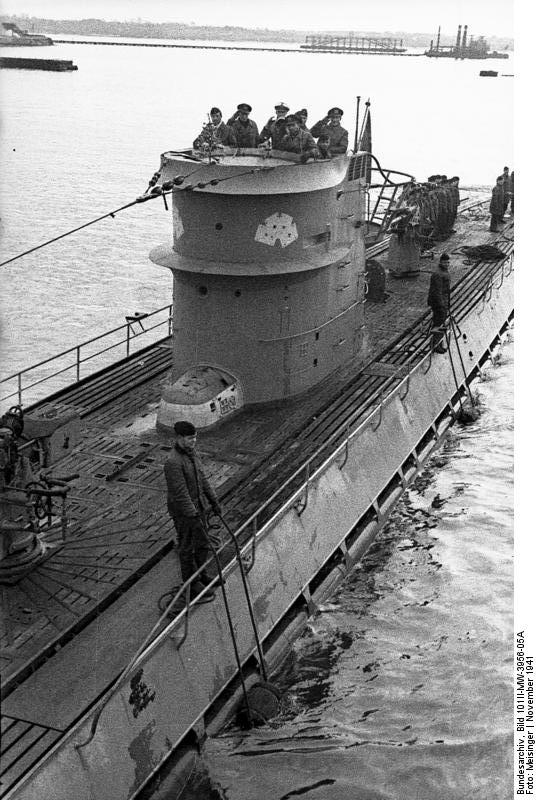
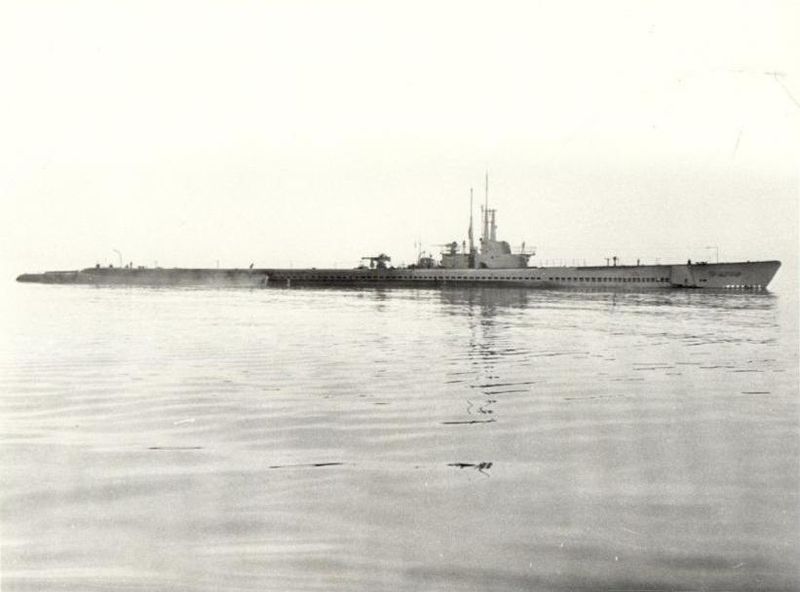
Do you find lots of gold?
How on earth do you find all the information?